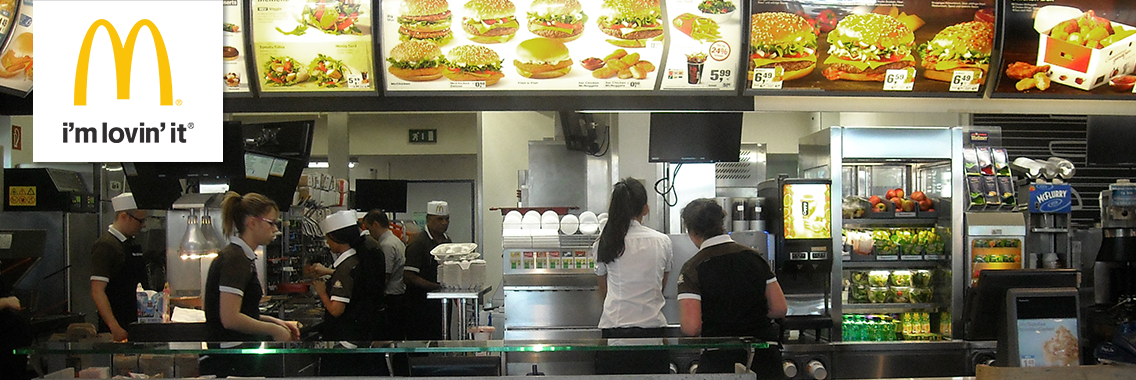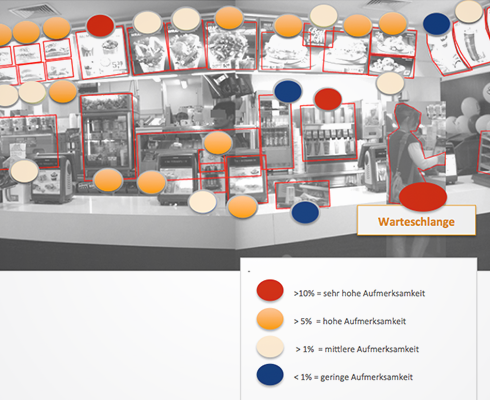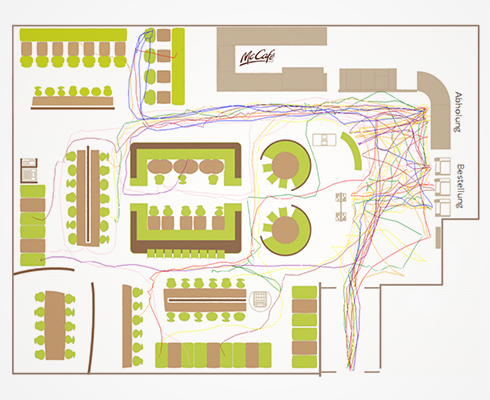
Customer Experience Study for McDonald’s Austria
With 195 restaurants and 176 cafés is McDonald’s one of the biggest companies for gastronomy in Austria. 85% of these restaurants are being operated by franchisees with a total of 9.500 employees.
Test-setting and mix of methods
To increase the quality of the products and the efficiency of the orders, McDonald’s developed the concept “Made for you” where every burger is being prepared right after the order. This way, McDonald’s guarantees its customers to always get a freshly made burger, to eliminate waiting time in the heating slides and separate order and pick-up.
Customer Experience Study
To test the implementation of the concept, USECON was assigned to execute a Customer Experience Study with qualitative and quantitative methods. McDonald’s customers were equipped with Eye Tracking glasses and accompanied through the store, to observe whether the new design of the order and pick-up sectors are being recognised as such, whether customers understand the new process and to discover possible pain & pleasure points to then submit adequate suggestions for improvement.
Customer Journey Mapping
The expectations, perceptions and experiences of the McDonald’s customers were recorded in a Customer Journey Map. This way, customers’ experiences can easily be re-enacted and illustrated and it is easy to show which experience factors influence the customer experience.
The customers’s journey through the store (and also through the McDrive) will be transparent, touchpoints (advertisting billboards, talks with the employees, menu boards,…) will be measureable and designable and future activities will be easier to plan. A Customer Journey Map is a target/actual comparison and lets the client – McDonald’s in this case – easily discover where gaps occur between the desired and real behaviour of the customer.
Eye Tracking
McDonald’s customers were being interviewed about their expectations towards the restaurant before they entered it. During the process of ordering and picking-up, the customers’ eye movements were being recorded with Eye Tracking glasses and the customers were being observed. When they sat down at the table with their orders, they were being interviewed about their experiences during the order process.
Gaze motion with Eye Tracking glasses
“Hotspots” are being discovered with recording the customers’ gaze motion with Eye Tracking glasses. This is important to see, whether the new design is being recognised by the customer and whether the advertising activities, like posters, are being seen. This also includes motion diagrams, which show where the target groups go to in the store:
Are offers being seen at the counter? Where do the most customers stay when waiting for pick-up? Which sectors are the most popular ones and does it make sense to put up some ads there? Are the guard posts in the McDrive well-lit and seen?

Services
- Customer Experience Study with qualitative and quantitative methods
- Customer Journey Mapping with Pain & Pleasure Points
- Usability-Tests including mobile Eye Tracking with end-users in the shop and in the McDrive
Impressions

